Mohamed Rihan
Unsupervised Learning for Joint Beamforming Design in RIS-aided ISAC Systems
Mar 26, 2024



Abstract:It is critical to design efficient beamforming in reconfigurable intelligent surface (RIS)-aided integrated sensing and communication (ISAC) systems for enhancing spectrum utilization. However, conventional methods often have limitations, either incurring high computational complexity due to iterative algorithms or sacrificing performance when using heuristic methods. To achieve both low complexity and high spectrum efficiency, an unsupervised learning-based beamforming design is proposed in this work. We tailor image-shaped channel samples and develop an ISAC beamforming neural network (IBF-Net) model for beamforming. By leveraging unsupervised learning, the loss function incorporates key performance metrics like sensing and communication channel correlation and sensing channel gain, eliminating the need of labeling. Simulations show that the proposed method achieves competitive performance compared to benchmarks while significantly reduces computational complexity.
Energy Efficiency Optimization in Active Reconfigurable Intelligent Surface-Aided Integrated Sensing and Communication Systems
Nov 28, 2023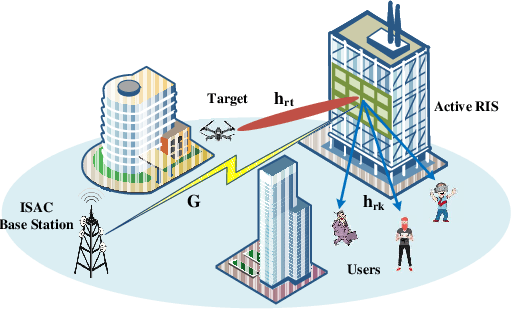
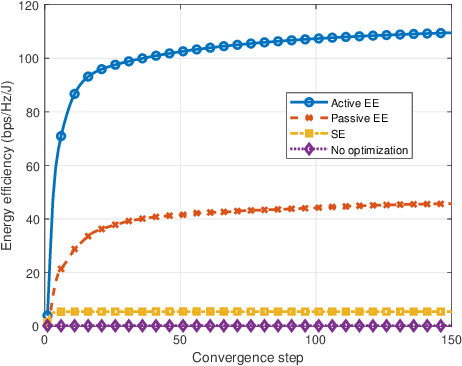
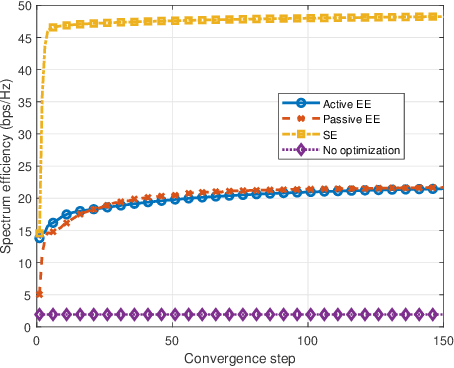
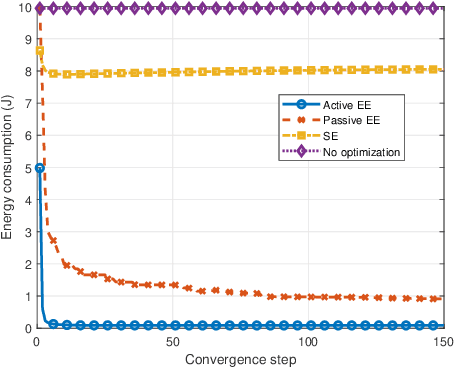
Abstract:Energy efficiency (EE) is a challenging task in integrated sensing and communication (ISAC) systems, where high spectral efficiency and low energy consumption appear as conflicting requirements. Although passive reconfigurable intelligent surface (RIS) has emerged as a promising technology for enhancing the EE of the ISAC system, the multiplicative fading feature hinders its effectiveness. This paper proposes the use of active RIS with its amplification gains to assist the ISAC system for EE improvement. Specifically, we formulate an EE optimization problem in an active RIS-aided ISAC system under system power budgets, considering constraints on user communication quality of service and sensing signal-to-noise ratio (SNR). A novel alternating optimization algorithm is developed to address the highly non-convex problem by leveraging a combination of the generalized Rayleigh quotient optimization approach, semidefinite relaxation (SDR), and the majorization-minimization (MM) framework. Furthermore, to accelerate the algorithm and reduce computational complexity, we derive a semi-closed form for eigenvalue determination. Numerical results demonstrate the effectiveness of the proposed approach, showcasing significant improvements in EE compared to both passive RIS and spectrum efficiency optimization cases.
Spatial Diversity in Radar Detection via Active Reconfigurable Intelligent Surfaces
Feb 03, 2022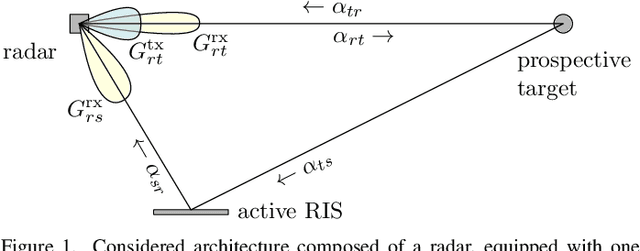


Abstract:Active reconfigurable intelligent surfaces (RISs) are a novel and promising technology that allows to control the radio propagation environment, while compensating for the product path loss along the RIS-assisted path. In this letter, we consider the classical radar detection problem and propose to use an active RIS to obtain a second independent look of a prospective target illuminated by the radar transmitter. At the design stage, we select the power emitted by the radar, the number of RIS elements, and their amplification factor in order to maximize the detection probability, for a fixed probability of false alarm and a common (among radar and RIS) power budget. An illustrative example is provided to assess the achievable detection performance, also in comparison with that of a radar operating alone or with the help of a passive RIS.
 Add to Chrome
Add to Chrome Add to Firefox
Add to Firefox Add to Edge
Add to Edge